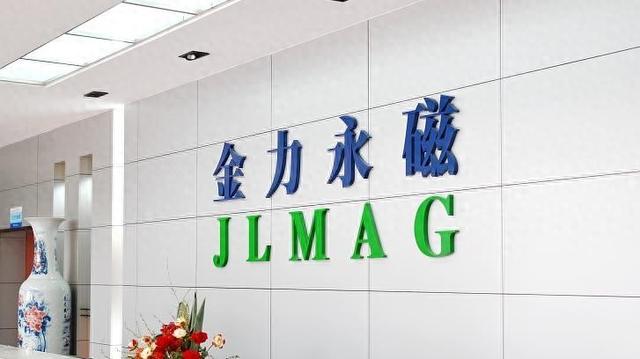Kafka是如何利用零拷贝提高性能的
<meta http-equiv="Content-Type" content="text/html; charset=UTF-8"/>
<div>
Kafka 在执行消息的写入和读取这么快的原因,其中的一个原因是零拷贝(Zero-copy)技术,下面我们来了解一下这么高效的原因。
传统的文件读写

数据首先从磁盘读取到内核缓冲区,这里面的内核缓冲区就是页缓存(PageCache)。然后从内核缓冲区中复制到应用程序缓冲区(用户态),输出到输出设备时,又会将用户态数据转换为内核态数据。
<span>
<strong>
<span>DMA</span>
</strong>
</span>
在介绍零拷贝之前,我们先来看一个技术名词DMA(Direct Memory Access 直接内存访问)。它是现代电脑的重要特征之一,允许不同速度的硬件之间直接交互,而不需要占用CPU的中断负载。DMA传输将一个地址空间复制到另一个地址空间,当CPU 初始化这个传输之后,实际的数据传输是有DMA设备之间完成,这样可以大大的减少CPU的消耗。我们常见的硬件设备都支持DMA,如下图所示:
<p style="text-align:center">
<img src="https://img2.tuicool.com/mmYVr2v.png!web" class="alignCenter" referrerpolicy="no-referrer"/>
</p>
零拷贝
mmap mmap 就是在用户态直接引用文件句柄,也就是用户态和内核态共享内核态的数据缓冲区,此时数据不需要复制到用户态空间。当应用程序往 mmap 输出数据时,此时就直接输出到了内核态数据,如果此时输出设备是磁盘的话,会直接写盘(flush间隔是30秒)。

<span>
<strong>
<span>sendfile</span>
</strong>
</span>
对于sendfile 而言,数据不需要在应用程序做业务处理,仅仅是从一个 DMA 设备传输到另一个 DMA设备。 此时数据只需要复制到内核态,用户态不需要复制数据,并且也不需要像 mmap 那样对内核态的数据的句柄(文件引用)。如下图所示:
<p style="text-align:center">
<img src="https://img2.tuicool.com/i6nuArj.png!web" class="alignCenter" referrerpolicy="no-referrer"/>
</p>
从上图我们可以发现(输出设备可以是网卡/磁盘驱动),内核态有 2 份数据缓存 。sendfile 是 Linux 2.1 开始引入的,在 Linux 2.4 又做了一些优化。也就是上图中磁盘页缓存中的数据,不需要复制到 Socket 缓冲区,而只是将数据的位置和长度信息存储到 Socket 缓冲区。实际数据是由DMA 设备直接发送给对应的协议引擎,从而又减少了一次数据复制。
<div>
<span>
<strong>
<span>
零拷贝的Java实现
</span>
</strong>
</span>
</div>
JDK 中的 FileChannel 提供了外部 channel 交互的传输方法。transferTo 方法会将当前 FileChannel 的字节直接传输到 channel 中,transferFrom() 方法可以将可读 channel 的字节直接传输到当前 FileChannel 中。transferTo() 方法底层是基于操作系统的 sendfile 这个系统调用来实现的,map 是对 Channel 做 mmap 映射。
下面我们看一下 Java NIO 中的方法摘要:
<pre class="prettyprint"><span>// 将当前 FileChannel 的字节传输到给定的可写 channel 中</span>
文件拷贝测试对比 下面我们看一下执行下面3段代码,并且 src.log 文件在不同大小的情况下的测试耗时结果。 1、传统拷贝
public class OldFileCopy {
public static final String source = "C:/data/src.log"; public static final String dest = "C:/data/dest.log";
public static void main(String[] args) { try { FileInputStream inputStream = new FileInputStream(source); FileOutputStream outputStream = new FileOutputStream(dest); long start = System.currentTimeMillis(); byte[] buff = new byte[4096]; long read = 0, total = 0; while ((read = inputStream.read(buff)) >= 0) { total += read; outputStream.write(buff); } outputStream.flush(); System.out.println("耗时:" + (System.currentTimeMillis() - start)); } catch (Exception e) { e.printStackTrace(); } } }
2、mmap 拷贝
public class MmapFileCopy {
public static final String source = "C:/data/src.log"; public static final String dest = "C:/data/dest.log";
public static void main(String[] args) { try { FileChannel sourceChannel = new RandomAccessFile(source, "rw").getChannel(); FileChannel destChannel = new RandomAccessFile(dest, "rw").getChannel(); long start = System.currentTimeMillis();
MappedByteBuffer map = destChannel.map(FileChannel.MapMode.READ_WRITE, 0, sourceChannel.size()); sourceChannel.write(map); map.flip();
System.out.println("耗时:" + (System.currentTimeMillis() - start)); } catch (Exception e) { e.printStackTrace(); } }
}
3、sendfile 拷贝
public class SendFileCopy {
public static final String source = "C:/data/src.log"; public static final String dest = "C:/data/dest.log";
public static void main(String[] args) { try { FileChannel sourceChannel = new RandomAccessFile(source, "rw").getChannel(); FileChannel destChannel = new RandomAccessFile(dest, "rw").getChannel(); long start = System.currentTimeMillis();
sourceChannel.transferTo(0, sourceChannel.size(), destChannel); System.out.println("耗时:" + (System.currentTimeMillis() - start)); } catch (Exception e) { e.printStackTrace(); } } }
通过对不同大小的文件进行对比测试,我们得到了下面的测试结果。
<p style="text-align:center">
<img src="https://img2.tuicool.com/VFzMZzZ.png!web" class="alignCenter" referrerpolicy="no-referrer"/>
</p>
从上面测试结果可以看出,mmap 和 sendfile 的方式要远远优于传统的文件拷贝。对于 mmap 和 sendfile 在文件较小的时候, mmap 耗时更短,当文件较大时 sendfile 的方式最优。
<span>本文来自:</span>
http://moguhu.com/article/detail?articleId=146
</div>






